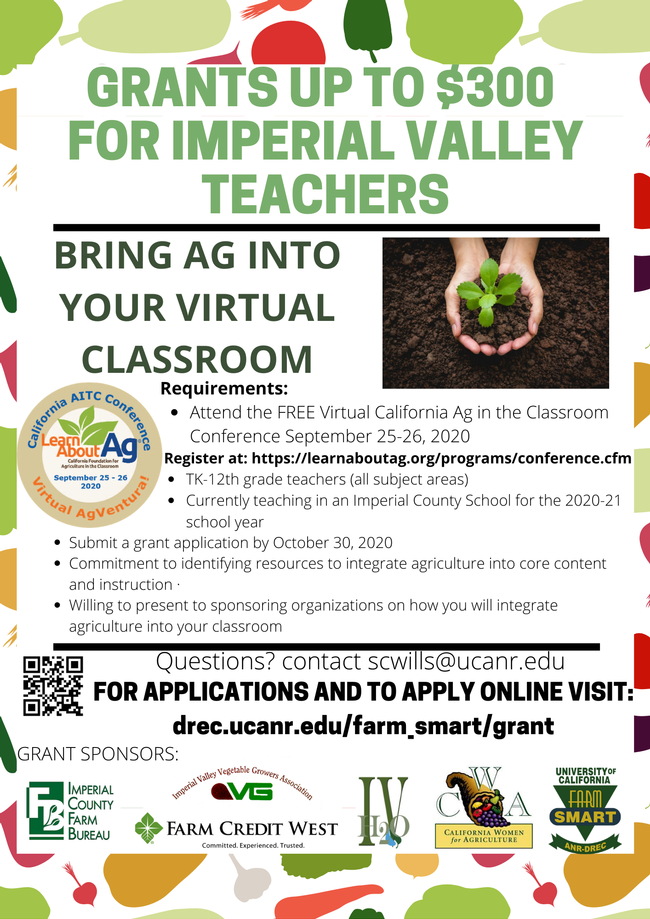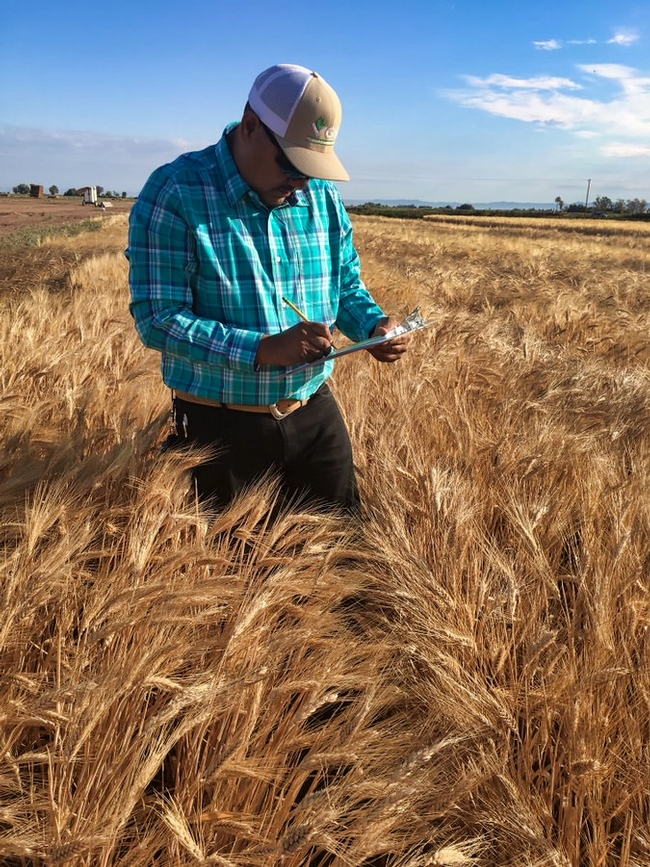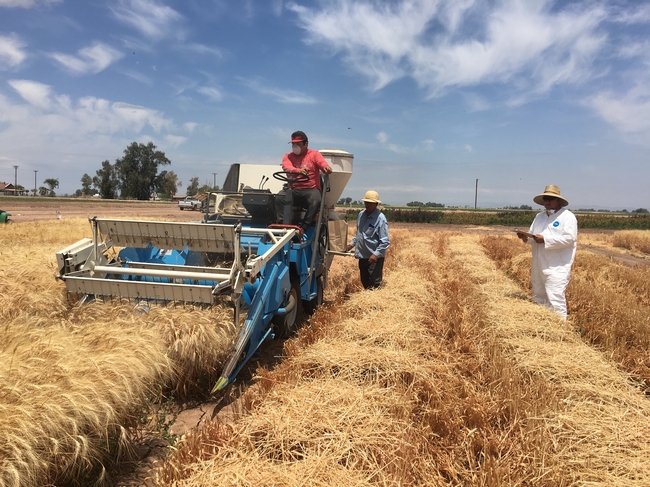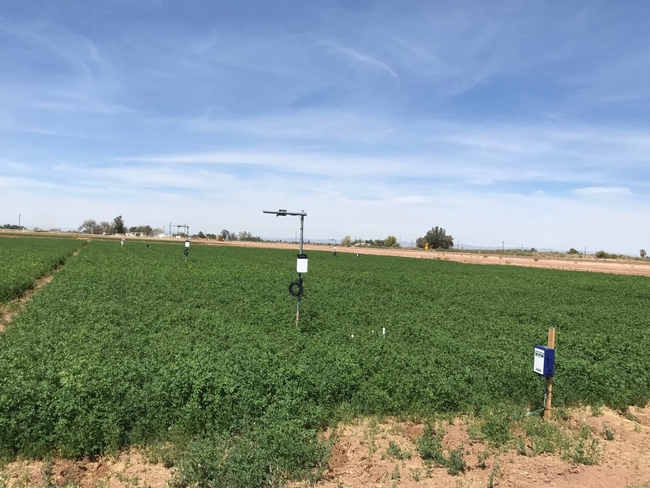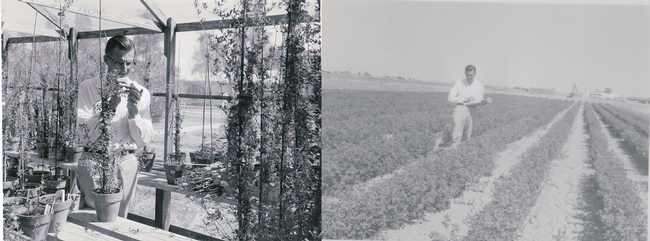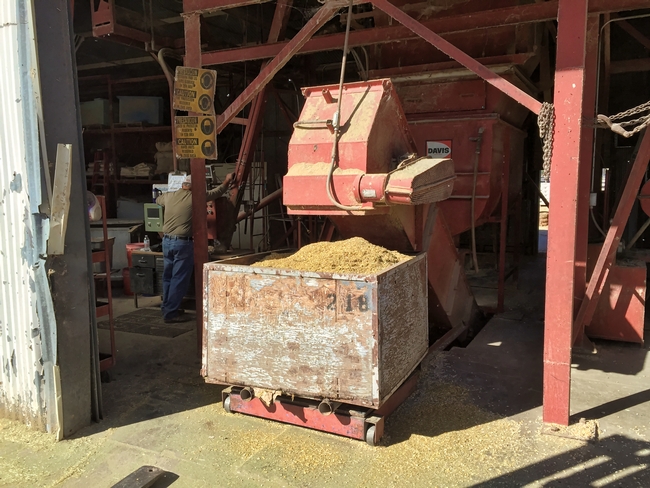- Author: Stacey AMPARANO
Through the generous donations of the Imperial County Farm Bureau, Imperial County Vegetable Growers Association, Farm Credit West, Imperial Valley Water, and California Women for Agriculture-Imperial Valley there are a limited number of grants available to Imperial County Educators! Educators who attend the 2020 Free Virtual CA Ag in the Classroom Conference on September 25-26 are eligible to apply for the available grants.
These grants are to support the integration of agriculture into regular classroom instruction or after school programs with an academic focus. May be used for initiating new projects or to expand existing projects that promote ag literacy in Imperial County. Grants can be used to fund innovative lessons, activities, classroom resources, guest speakers, outreach programs, field trips, and other projects. For more information and a link to register for the conference, please visit http://drec.ucanr.edu/farm_smart/grant/
- Author: Stacey AMPARANO
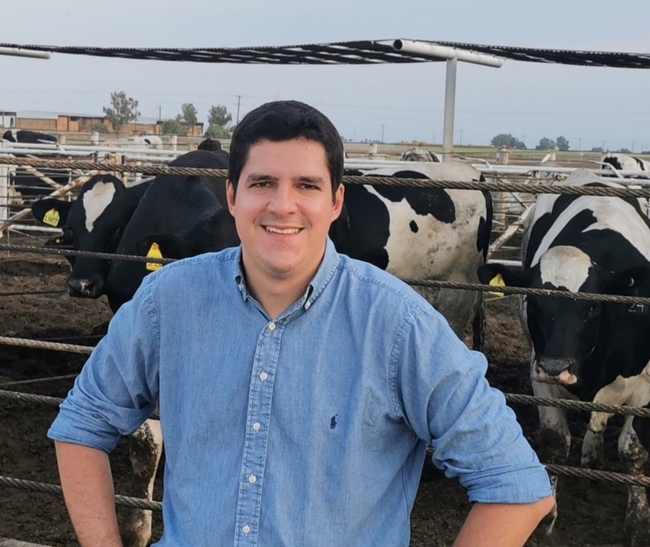
We are pleased to introduce Dr. Pedro Carvalho, the newest addition to Desert REC. Dr. Carvalho started his position in Imperial County on August 1, 2020, as the Feedlot Management Specialist. UC ANR and Davis-ASD leadership has filled a critical academic position for the CA/AZ/MX desert region to be housed at Desert REC.
We had a chance to interview Dr. Carvalho below.
Tell us about yourself:
I grew up around my family's cattle and crop farm in the state of Goias - Brazil. Being raised in an agricultural family, with many agronomists, veterinarians, and animal scientists, I decided to attend the Federal University of Mato Grosso do Sul (UFMS) – Brazil to pursue my bachelor's degree in Animal Science. During my time in college, I had the opportunity to work as an intern in many fields related to livestock production, such as agribusiness and pasture management, as well as beef cattle reproduction and nutrition. It was during my undergrad in 2012 that I had the opportunity to come to the United States for the first time to work as an intern at The Ohio State University in the beef cattle reproduction and nutrition labs.
Upon graduation, I worked for a private cattle nutrition company in the state of Mato Grosso do Sul - Brazil as the manager of the Program of Extension and Knowledge that the company has. The PEK is a program that takes knowledge from science to practice and focuses on producers, farmworkers, and college students. During this period, I had the opportunity to work directly with some of the company's clients in nutrition and management of beef cattle. However, most of my time was dedicated to organizing and conducting events to educate and train farmworkers, college students, and beef producers. The main goal of the events were to teach producers, farmworkers, and students in topics such as: “Mineral supplementation”, “Stepping up your finishing system”, “Beef cattle maternity management”, “Good practices of vaccine application”, “Animal welfare”, “Learning how to manage your salary”, and other topics related to beef cattle production and management.
In 2014, I came back to the United States to work as an intern at Dr. Tara Felix's Lab at the University of Illinois, Urbana-Champaign. I started my master's in 2015 in the same lab, and in the fall of 2017, I presented my master thesis on “Enhancing the Feeding Value of Corn Crop Residues to Improve Beef Cattle Production”. After completing my master's degree at UIUC, I started my PhD program at The Pennsylvania State University, working with the same adviser (Dr. Felix). At Penn State, I conducted many research projects to enhance the efficiency of Holstein steers in the feedlot. Therefore, in the summer of 2020, I presented my PhD dissertation on “Strategies to Increase the Efficiencies of Holstein Steers in Feedlot Applications”.
What was the last project you led, and what was its outcome?
In my last research project at Penn State University, our goal was to compare the effects of 2 applications of a non-coated hormone implant in a 56 days window period versus 1 application of a coated hormone implant during the last 112 days of the finishing period of Holstein steers in the feedlot. The outcome from this experiment was that regardless of implant strategies used, Holstein steers feedlot growth performance and carcass characteristics were similar. I would like to point out here that the reason for why we decided to test the 56 days reimplantation window was due to previous findings from our lab, that suggests the Holstein steers have shorter hormone implant payout period than traditional beef breeds. However, more research needs to be conducted on this topic, and this is one of my goals here at the Desert Research and Extension Center.
Why did you choose to work with animals?
The fact that the majority of my family works in the cattle and crop business made a significant impact on my decision to keep working with animals. However, my dad, who is an animal scientist, always advised me to avoid working with animals because of the challenges that I would have in this career. As we can see, his advice didn't work well. I've always been passionate about beef cattle production, and after I decided to follow his steps, he and my mother have been great supporters for me to stay in the cattle business. My grandfather and one of my uncles who is a veterinarian are also great influences for me staying in the animal business.
What attracted you to work here?
There are many reasons that attracted me to work in the Imperial Valley. Among them is the opportunity to continue researching beef production from Holstein steers. During my Ph.D., I became passionate about these animals, and here in this part of the world is the best place to continue my previous work in feeding Holstein steers to beef production. The fact that Dr. Richard Zinn is also working in the research center made a significant impact on my decision as well. Dr. Zinn is an inspiration and somebody who I mirror to be in the future. Last but not least, being a native of South American, I am looking forward to living in a place that I don't have to remove snow from my sidewalks during the winter, once again, I think that I found the right place for that.
What are your plans for research and extension?
My plans as an extensionist and researcher at the Desert Research and Extension Center is to first understand what the needs are from our feedlot operations in Imperial County. After that, I plan to implement and conduct actions (research projects and on-farm training) to help our beef producers and farmworkers. I really hope that I can bring value to our stakeholders by providing information on nutrition and management, as well as helping to train and improve the lives of the workers in feedyards of our state.
What do you do in your spare time?
Barbecue and soccer. I am passionate about those 2 things, and I believe that both are great ways to bring family (the most important thing in life) and friends together. I love to be around people, and nothing better than sports and food to do that. Plus, by starting a fire and putting a steak on the grill, I'll be always supporting our beef industry. #EatMoreBeef
We look forward to seeing the impact of Dr. Carvalho's work at Desert REC. Welcome to UCANR and welcome to Imperial County.
For more information, please contact Dr Pedro Carvalho at pcarvalho@ucdavis.edu
- Author: Stacey AMPARANO
If you have ever enjoyed Barilla pasta in your favorite Italian dish, you have most likely consumed Desert Durum wheat from Imperial County. The success of the Desert Durum wheat is due to research of UC Davis Distinguished Professor and HHMI Researcher, Jorge Dubcovsky. Desert REC is the central testing location for the University of California Durum Wheat breeding and Regional testing program. The Imperial Valley is the main location for the production of the Desert Durum ®, a special type of durum with excellent quality that is highly demanded by different local and international buyerslikeBarilla Pasta. Through testing at Desert REC, the UC Durum Wheat breeding and Regional testing program developed the successful variety Desert King in 2005, which was followed in 2011 by Desert King-HP. This varietal incorporated a gene from wild wheat that significantly increased grain protein content. To satisfy the quality requirements of the international buyers the UC programreleasedMiwok in 2013 with reduced cadmium levels. Recently, in 2018 the program released Desert Gold, which combines the high yield potential of Desert King, low cadmium levels, and a superb pasta quality. The durum wheat varieties developed in collaboration between UC Davis and Desert REC currently cover 43% of the durum wheat acreage in California. In addition, UC Davis and Desert REC have collaborated with industry to incorporate the high grain protein content into their varieties. Considered together, the UC varieties combined with the varieties from industry developed with the help of Desert REC and the UC Davis Breeding program currently cover 80% of the durum wheat acreage in California. This number documents the high value that the UC Davis-Desert REC collaboration brings to the California Wheat Industry in general.
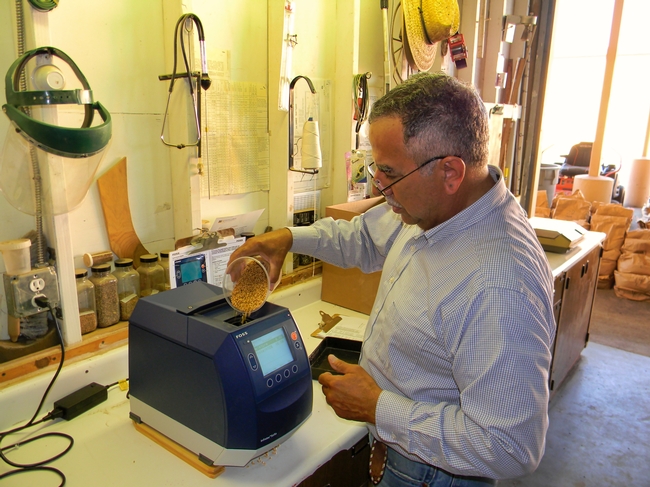
Further reading:
UC Small Grains Research & Information:(Research result from Imperial Valley Trials)
UC Davis Wheat Breeding Program
For more information on the UC Durum Wheat breeding and Regional testing program, please contact Jorge Dubcovsky at jdubcovsky@ucdavis.edu
For more information on DREC and its educational program, please contact our Center Director, Jairo Diaz at jdiazr@ucanr.edu or our Farm Smart Program Manager, Stacey Amparano, at scwills@ucanr.edu. You can also reach us at (760)356-3060
- Author: Stacey AMPARANO
Water has always been a precious commodity in Imperial County. With rainfall averaging less than 3 inches per year, this arid desert region depends on irrigation water from the Colorado River to continue its production of over 100 different commodities on its deep, rich soil. While water flowed has freely since the early 1900's, water transfers and growing metropolitan cities have put increased pressures on Imperial County to conserve and meet the demands of the future. Imperial County is the top producer of Alfalfa in California, and it is one of the top commodities in Imperial County, with over 150,000 acres of alfalfa harvested annually and shipped across the world. Alfalfa has also been Imperial Valley's biggest user of water as well as IV's most valuable field crop, with a gross value of $218 million in 2018 according to the Imperial County Crop Report.
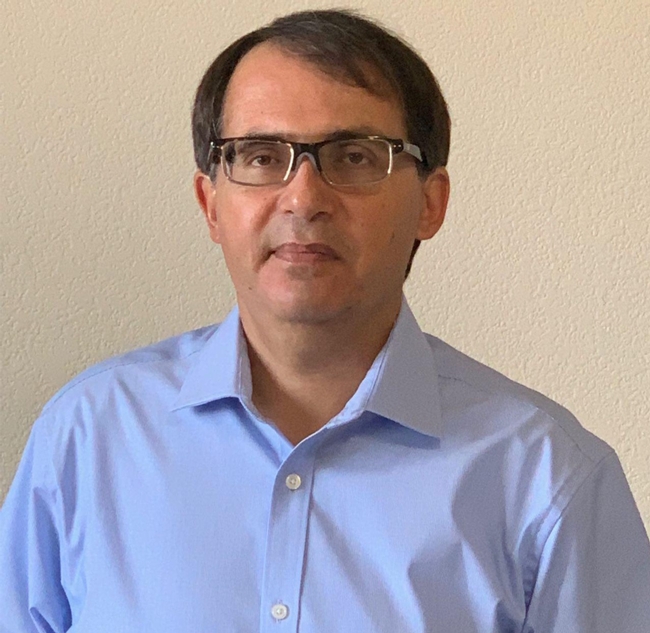
The scientific findings from UCDREC and UCCE will continue to play a critical role in forming successful solutions to Imperial Valleys emerging water issues related to agriculture and alfalfa.
For more information on DREC and its educational program, please contact our Center Director, Jairo Diaz at jdiazr@ucanr.edu or our Farm Smart Program Manager, Stacey Amparano, at scwills@ucanr.edu. You can also reach us at (760)356-3060
Further reading/viewing:
The Early History of Water in Imperial Valley: Video
Early History of Water in Imperial Valley- Presentation and Study Guide
- Author: Stacey AMPARANO
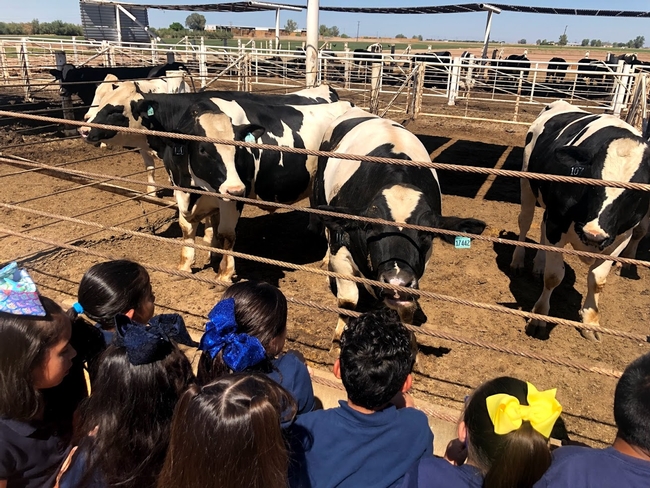
In his recent work, Dr. Zinn's research has investigated corn processing for feed in feedlots producing calf-fed Holstein steers at DREC, indicating feed values for corn increased by 18%, improving average daily gain and feed efficiency while decreasing the cost of feed to produce high quality beef. This methodology is widely used throughout feedlots in the Imperial County and desert southwest of the US.
Additionally, Dr. Zinn's analysis of sugarbeets as a partial replacement of up to 40% of corn in feed rations has demonstrated feed costs can be decreased by 15-40% when corn costs are high while maintaining animal productivity. While only used opportunistically depending on feed costs, this research allows for a reduction in feed costs while maintaining production.
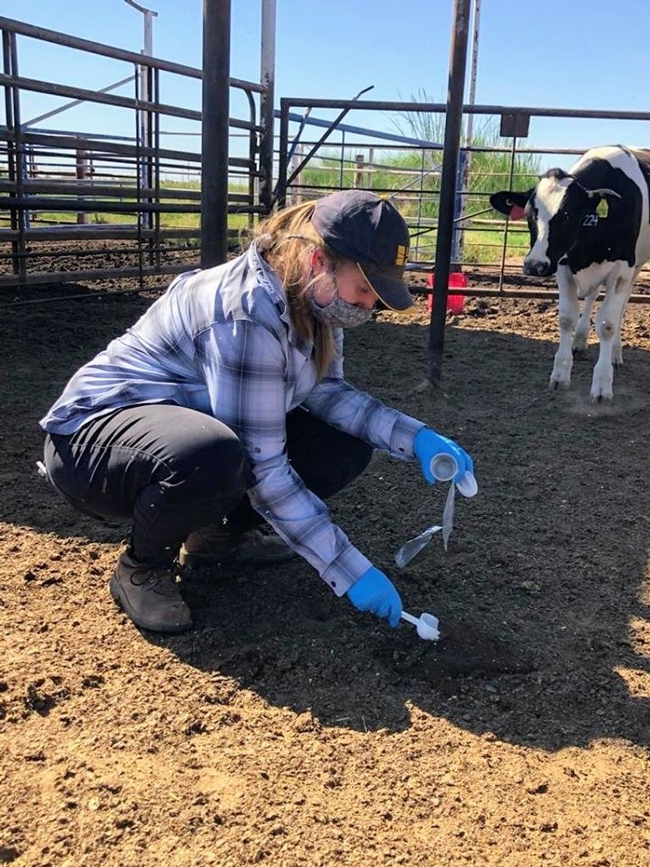
Joining the team in August 2020 as the Feedlot Management Specialist is Dr. Pedro Carvalho. Dr. Carvalho will report to UC Davis Animal Science Department. Having Latack and Carvalho in our Center will enhance our mission and continue a long and rich history of support to our local/regional/world cattle industry.
For more information on DREC and its educational program, please contact our Center Director, Jairo Diaz at jdiazr@ucanr.edu or our Farm Smart Program Manager, Stacey Amparano, at scwills@ucanr.edu. You can also reach us at (760)356-3060

